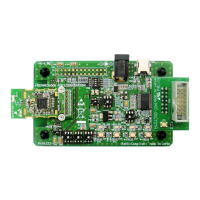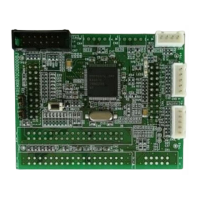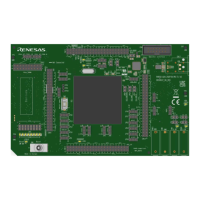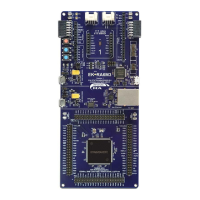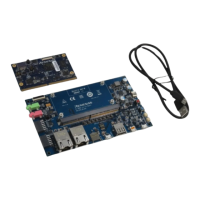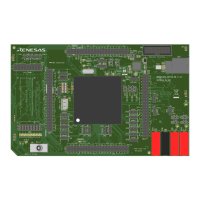RL78/G13 Handshake-based SPI Master Transmission/Reception
R01AN6883EJ0100 Rev.1.00 Page 7 of 38
June.15.23
1.3 Communication Format
Table 1-3 lists the characteristics of the CSI communication format that is used in the sample code.
Table 1-3 Communication Format
Item Specification Remarks
About 200 kbps at minimum
Receive/transmit/transmit and
receive
Maximum number of
characters transferred
63 characters/slot 32 characters by default
1.4 Handshake
In this application note, handshaking using the BUSY signal is performed to secure the setup time required
for the communication operation on the slave side. A timeout of 16 µs is set up in case no response using
the BUSY signal is returned from the slave. If no response is returned from the slave within this period, the
master assumes that the slave cannot establish a communication (or does not exist) and terminates
communication processing.
Figure 1-5
shows an example of handshaking for status checking. The master measures the time from the
falling edge of the CS
signal until the BUSY signal goes low. When detecting that the BUSY signal goes low
without the timeout, the master sends the command. After confirming that command transmission is
completed through the transfer completion interrupt, the master measures the time until the BUSY signal
goes low again. In this way, the master synchronizes with the slave by checking the BUSY signal each time
communication starts.
However, if the slave supports continuous reception or can secure enough time to prepare communication
data, synchronization using the BUSY signal is not necessary.
Figure 1-5 Handshaking Example
SCK
TSFmn
INTCSIp
CS1 / CS2
BUSY
Selection of slave
Command transmission
End of transmission End of reception
Status reception
Status reception
Time measurement
to detect timeout
End of reception
Generally, the BUSY signal is not required for SPI communication-dedicated slave devices such as
EEPROM because they are always ready for communication. When connecting such SPI communication-
dedicated slave devices, pull down the BUSY signal input pin. Additionally, the timeout processing can be
removed by deleting the wait() function from the program. In such a case, perform communication according
to the commands that are defined for the SPI communication-dedicated slave devices and their
communication protocol.

